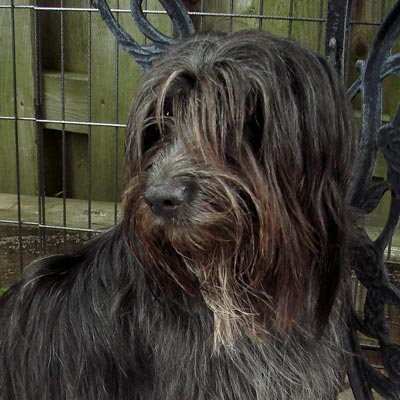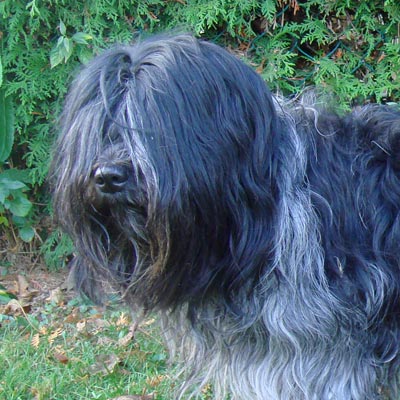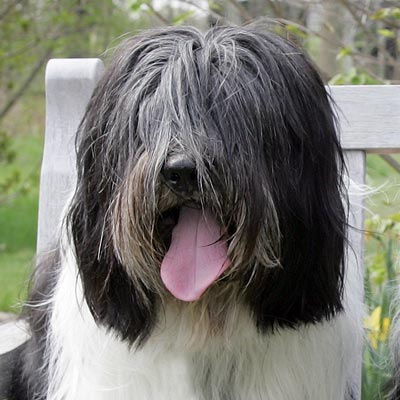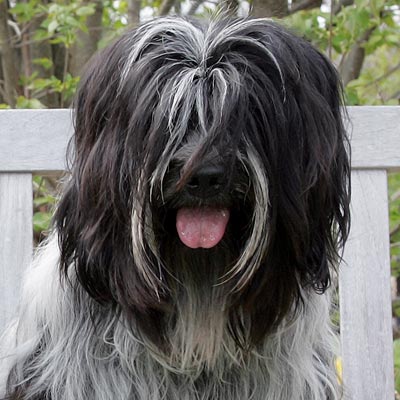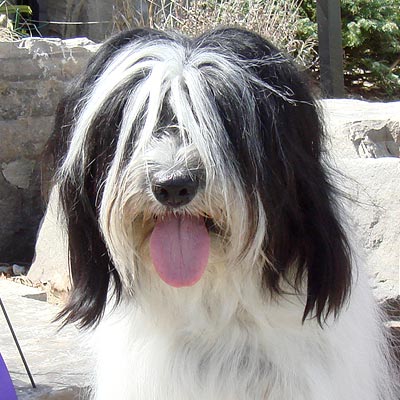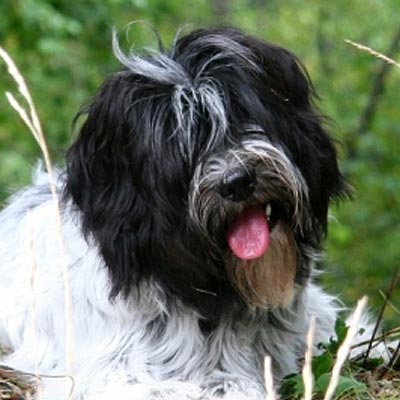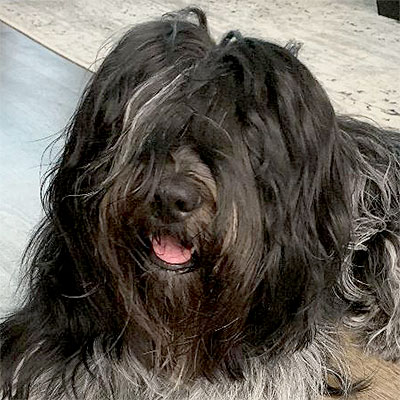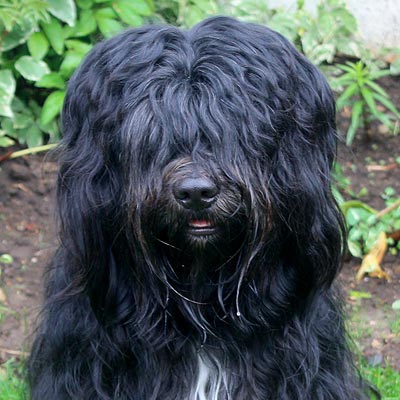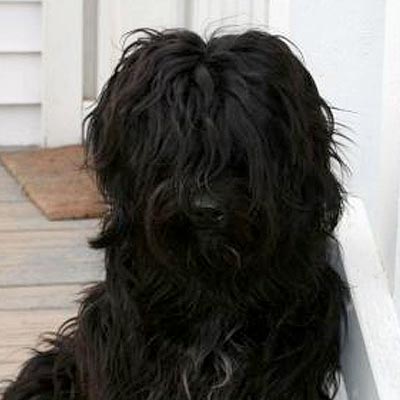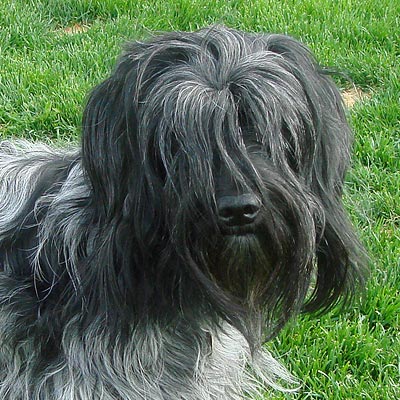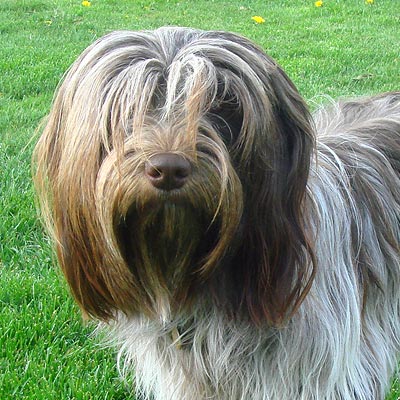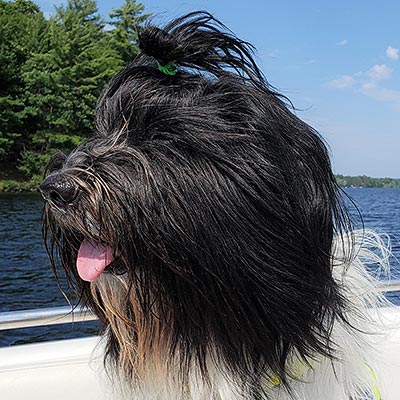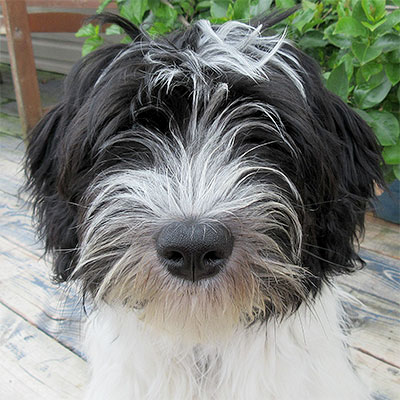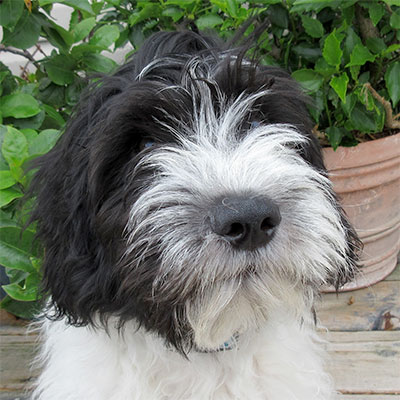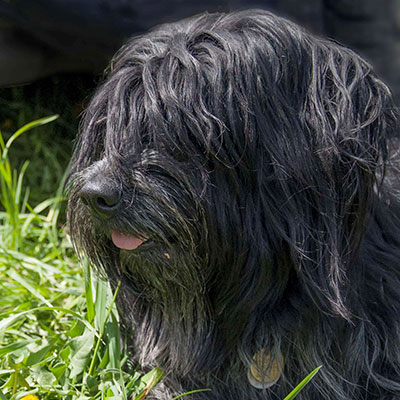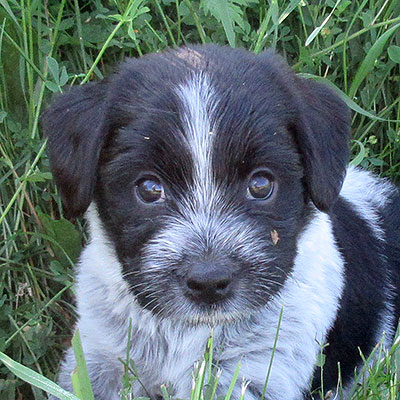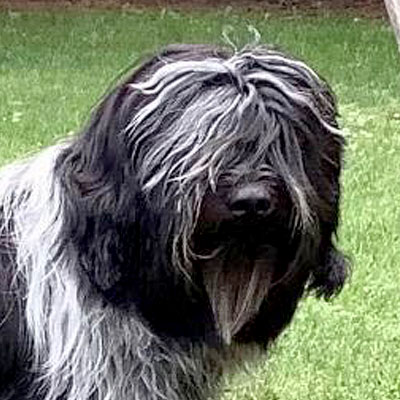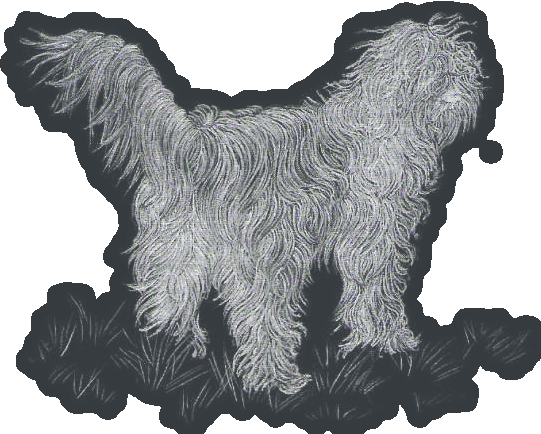UTILIZATION
The Nederlandse Schapendoes is a herding dog which was used for herding flocks of sheep and which is still used in the same capacity today. As pasture for sheep is situated mainly in quiet, lonely areas of the country, it is necessary for the Schapendoes to be equipped with great endurance, mobility and speed. A great facility for jumping is essential, as well as intelligence and the ability to act on his own. He has to be a true herding dog in character, body and soul.
CLASSIFICATION F.C.l.
Group 1: Sheepdogs and Cattle-dogs (except Swiss cattle-dogs).
Section 1: Sheepdogs. Without working trial.
BRIEF NISTORICAL SUMMARY
At the end of the last and beginning of this century, the Nederlandse Schapendoes occurred everywhere in the region of the Netherlands where there was heathland and where there were herds or flocks of sheep. The shepherds valued him for the tireless pleasure he took in his work and for his intelligence. He belongs to the wide-ranging group of longhaired herding breeds which have densely coated heads. He is related to the Bearded Collie, the Puli, the Owczarek Nizinny, the Bobtail, the Briard, the Bergamasker and the German Schafpudel of the variety which occurs in Hessen, Odenwald and the Niederrhein district. All these similar dogs are smaller mutations of mountain dogs. The canine authority, P.M.C. Toepoel, is the founder of this breed. During the Second World War, he knew how to rouse interest in the breed. During the years from 1940 to 1945 specimen of the almost vanished Schapendoes were used for breeding from wherever they could be found. The Breed Club for Nederlandse Schapendoes was founded in the year 1947 and in 1952 the breed was provisionally recognised by the Raad van Beheer. In 1954 the standard was set up and a Studbook started. Definite recognition followed in the year 1971. Since then only registered dogs have been bred from.
BEHAVIOUR/TEMPERAMENT
The Schapendoes is a normally and harmonically constructed herding dog with an attentive and courageous character. He is intelligent, watchful, jolly, lively, friendly and high spirited. Towards people familiar to him, he develops great affection and loyalty.
GENERAL APPEARANCE
The Nederlandse Schapendoes is a lightly built, long coated dog with a height at whithers of 40 to 50 cm. His movement is effortless and springy. He is a remarkable jumper.
HEAD
The abundant growth of hair gives the head the appearance of looking bigger and, in particular, broader.
CRANIAL REGION
Skull: Almost flat with a moderate frontal furrow and strongly defined superciliary arches. It is fairly broad in proportion to its length: the width is slightly greater than the distance between the stop and the occiput.
Stop: Clearly defined but not steep.
FACIAL REGION
Nose: The bridge of the nose is placed a little lower than the line of the skull.
Muzzle: The muzzle is shorter than the distance between the stop and the occiput. The foreface tapers hardly, remains deep and ends broadly, being only slightly rounded at its end. Seen from the side, with jaw closed, the lower jaw must be clearly visible.
Teeth: Normally developed scissor bite.
Cheeks: The zygomatic arches are strongly prominent.
Eyes: The eyes are fairly large, round and set into the socket in a normal position. They are placed more to the front than the side of the head. Their colour is brown; they should not give the impression of being black. The white of the eye should only be visible when the dog looks hard to one side. The expression is open-minded, honest and lively. Shape, colour and expression are very characteristic for the breed.
Ears: These are set on fairly high and are neither large nor fleshy. They hang free, but not close to the head. They are amply feathered and mobile but should not protrude beyond the outline of the skull.
NECK
The head is carried high on a strong, clean neck.
BODY
The Schapendoes is slightly longer than high. The skeleton is fine boned, pliable and elastic.
Top line: Curved over a strong muscular loin.
Chest: Deep. Ribs are moderately to well sprung; they reach far back.
Lower line and Belly: Not too tucked up.
TAIL
The tail is long, well coated and feathered. The manner and way in which the dog carries his tail is characteristic of the breed. In repose it hangs downwards. When trotting, the tail is carried fairly high and swings slightly curved from one side to the other. When galloping, it is stretched out straight. When jumping, the tail definitely serves as a rudder. When the dog is alert, the tail may sometimes be raised high. lt should, however, never be carried stiffly over the back.
LIMBS
Forequarters: The front legs are straight and lightly boned. Good angulation of the front legs should emphasize the fore-chest.
Pasterns: Springy.
HINDQUARTERS
Pelvis: In a well-slanted position.
Hocks: Moderately angulated, well muscled. Metatarsus: Short.
FEET
The feet are fairly large and elastic, broad and oval in shape.
The toes are tightly bunched.
The pads are thick and springy, with plentiful hair between them.
Dewclaws are permitted.
GAIT/MOVEMENT
In his work, the Schapendoes gallops rather than trots, so his movement must be light footed and springy without excessive use of energy. He must be able to jump well and turn swiftly.
COAT
Hair: The Schapendoes has a thick coat with sufficient undercoat. The coat is long, a good 7 cm or more in the region of the hindquarters. lt is not smooth, but lightly waved. Definitely curly, frizzy hair is not permitted. The hairs grow very densely together; they are fine and dry, but above all, never silky. The coat, where it is long, is inclined to stand off in tufts, giving the Schapendoes a large girth, especially at the rear. The Schapendoes has a tremendous topknot moustache and beard.
COLOUR
All colours are permitted. Preference is given to blue-grey to black.
SIZE
Height at withers:
For dogs: 43 - 50 cm.
For bitches: 40 - 47 cm.
FAULTS
Any departure from the foregoing points should be considered a fault and the seriousness with which the fault should be regarded should be in exact proportion to its degree.
DISQUALIFYING FAULTS
No Schapendoes which behaves nervously and - or - aggressively in the ring will be placed or classified.
N.B.
Male animals should have two apparently normal testicles fully descended into the scrotum.
 The Schapendoes, or Dutch Sheepdog, is a lightly built, lively dog. Although there are only a few Schapendoes still actively working with flocks of sheep, the breed does not deny its sheepherding origin.
The Schapendoes, or Dutch Sheepdog, is a lightly built, lively dog. Although there are only a few Schapendoes still actively working with flocks of sheep, the breed does not deny its sheepherding origin. They are true herding dogs in character, body and soul. Cowardice, nervousness and aggressiveness are not characteristic. The Schapendoes is an engaging and delightful companion, always ready for a rousing game of ball, a walk through the woods, or to curl up nearby while you watch tv or read a book. They are active and energetic dogs that can excel in obedience and agility. Indoors they are calm, provided they get daily walks, with some activity such as playing ball or chasing dog friends at the park. They are eager to learn but require a firm and fair hand if they are not to get the better of their human partners. They are an excellent companion for kids due to their sociability, perpetually happy demeanour and ready to play attitude, as tireless as they are nice. To other dogs, a Schapendoes is generally obliging and tolerant; early and frequent socialization is necessary to help promote this attitude. The Schapendoes has low hunting instincts and are therefore not likely to wander away. They thrive when they are together with their families.
They are true herding dogs in character, body and soul. Cowardice, nervousness and aggressiveness are not characteristic. The Schapendoes is an engaging and delightful companion, always ready for a rousing game of ball, a walk through the woods, or to curl up nearby while you watch tv or read a book. They are active and energetic dogs that can excel in obedience and agility. Indoors they are calm, provided they get daily walks, with some activity such as playing ball or chasing dog friends at the park. They are eager to learn but require a firm and fair hand if they are not to get the better of their human partners. They are an excellent companion for kids due to their sociability, perpetually happy demeanour and ready to play attitude, as tireless as they are nice. To other dogs, a Schapendoes is generally obliging and tolerant; early and frequent socialization is necessary to help promote this attitude. The Schapendoes has low hunting instincts and are therefore not likely to wander away. They thrive when they are together with their families.